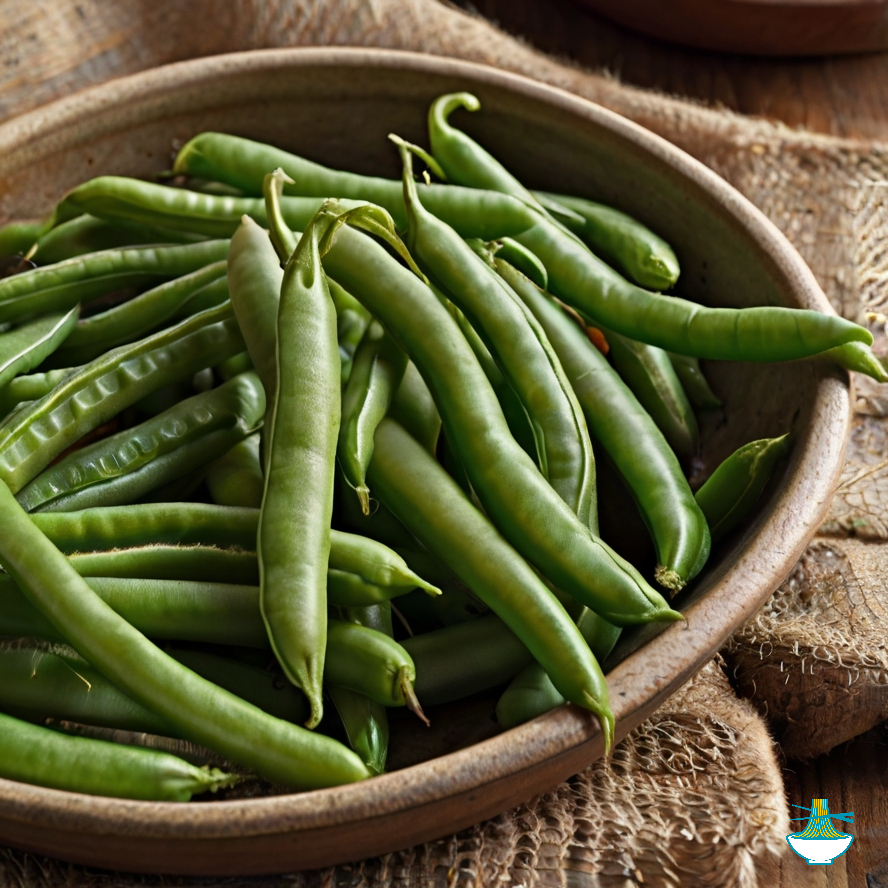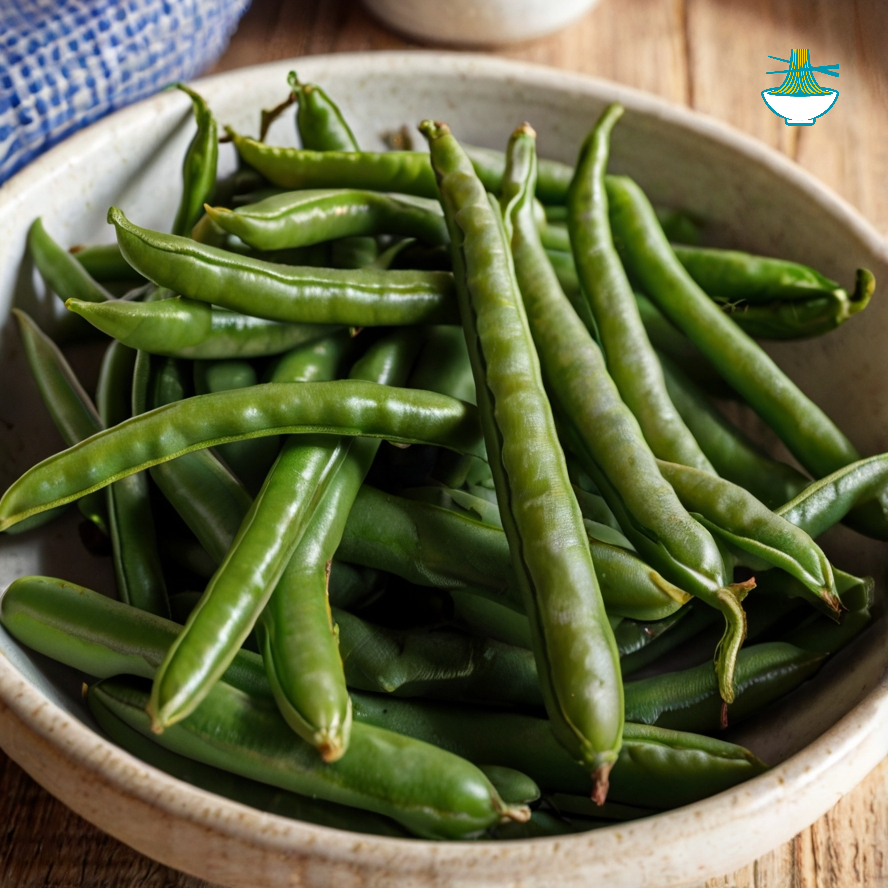green beans in diverse vegetable dishes , Delight in flavorful recipes , offering both taste and nutritional benefits such as fiber and essential vitamins .
let's read about the diverse uses of green beans in various vegetable dishes, from traditional casseroles to stir-fries and salads. Explore tasty recipes and inventive ways to enjoy this nutritious and flavorful vegetable in your cooking.
Ingredients:
- 1 lb fresh green beans, trimmed
- 2 tablespoons butter
- 2 cloves garlic, minced
- Salt and pepper to taste
- Optional: lemon zest or grated Parmesan cheese for garnish

Instructions:
Blanch the Green Beans: Bring a large pot of salted water to a boil. Add the green beans and cook for 2-3 minutes until they turn bright green and slightly tender. Avoid overcooking; they should still have a slight crunch. Drain the green beans and immediately transfer them to a bowl of ice water to stop the cooking process. Drain again and pat dry with paper towels.
Sauté with Garlic Butter: In a large skillet, melt the butter over medium heat. Add the minced garlic and sauté for about 1 minute until fragrant, being careful not to burn it.
Cook the Green Beans: Add the blanched green beans to the skillet with the garlic butter. Toss to coat the beans evenly with the butter and garlic. Cook for 3-4 minutes, stirring occasionally, until the green beans are heated through and tender but still crisp.
Season and Serve: Season the green beans with salt and pepper to taste. If desired, garnish with lemon zest or grated Parmesan cheese for an extra burst of flavor. Serve hot as a side dish alongside your favorite main course.
This simple yet delicious recipe showcases the natural flavor of green beans while enhancing it with the richness of garlic butter. Enjoy these green beans as a versatile addition to a variety of vegetable dishes!
Nutritional Values :
Here are the nutritional values and benefits for each ingredient:
1. 1 lb fresh green beans, trimmed
- Calories: 150
- Fat: 0.5g
- Carbohydrates: 35g
- Fiber: 15g
- Protein: 7g
- Benefits: High in dietary fiber, which supports digestive health. Rich in vitamins A, C, and K, promoting immune function, skin health, and bone health. Provides antioxidants that help reduce inflammation and protect against chronic diseases.
2. 2 tablespoons butter
- Calories: 204
- Fat: 23g
- Carbohydrates: 0g
- Protein: 0g
- Benefits: Provides essential fatty acids that support brain function and cell structure. Adds richness and flavor to dishes. Contains vitamin A, which supports vision and immune health.
3. 2 cloves garlic, minced
- Calories: 8
- Fat: 0g
- Carbohydrates: 2g
- Protein: 0g
- Benefits: Has antimicrobial properties that help fight infections and support immune health. Contains compounds like allicin, which may help reduce blood pressure and cholesterol levels. Provides antioxidants that protect cells from damage.
4. Salt and pepper to taste
- Salt:
- Calories: 0
- Fat: 0g
- Carbohydrates: 0g
- Protein: 0g
- Benefits: Enhances flavor. Use in moderation to control sodium intake and manage blood pressure.
- Pepper:
- Calories: 6 (per teaspoon)
- Fat: 0g
- Carbohydrates: 1g
- Protein: 0g
- Benefits: Contains piperine, which may help improve digestion and enhance nutrient absorption. Provides antioxidants that help fight inflammation.
5. Optional: lemon zest or grated Parmesan cheese for garnish
- Lemon zest (1 teaspoon):
- Calories: 1
- Fat: 0g
- Carbohydrates: 0g
- Protein: 0g
- Benefits: Adds a fresh, citrusy flavor. Rich in vitamin C, which supports immune function and skin health. Contains antioxidants that help protect cells.
- Grated Parmesan cheese (1 tablespoon):
- Calories: 22
- Fat: 1.5g
- Carbohydrates: 0g
- Protein: 2g
- Benefits: Provides a source of calcium and protein. Adds a rich, savory flavor to dishes. Contains vitamins like A and B12, which support bone health and energy metabolism.
Please note that these values are approximate and may vary based on factors such as brand variations and specific ingredient sizes


Comments